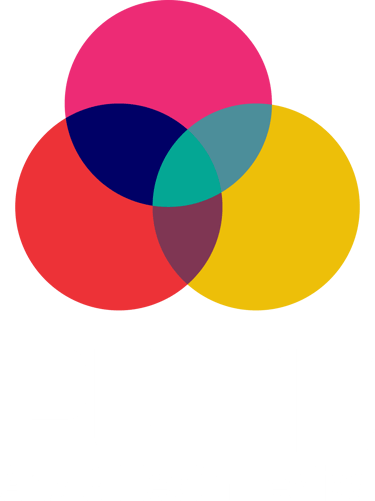Art- My Sanctuary from Stress
Dr. Rashmi Patil
10/19/20253 min read
In the present time, stress has become a universal experience that transcends from children’s to elderly generation (1). Teenagers face mounting pressure from academics and constant digital distractions, while young adults struggle to juggle careers, relationships, and the weight of their own expectations (2,3). Middle-aged individuals strive to balance the professional demands along with fulfilling the family responsibilities (4). Even the elderly population is facing a hard time facing isolation and keeping up with new technologies (5).
From a neuroscience perspective, stress is the body's natural response to challenges (6). Chronic and sustained exposure to stressors can be detrimental to brain function and overall well-being, by disrupting the brain chemistry and structure (7). Cortisol, a hormone released by the body, helps to manage the “fight-or-flight” response and is beneficial for alertness and energy, but in excess results in chronic stress that is harmful for the body (8,9).
Managing stress is no longer a choice but a necessity for mental and physical well-being. Practicing mindfulness, nurturing real social connections, pursuing restorative activities such as art, music, or nature immersion can promote emotional and physiological balance. Engaging in any art form reduces stress and lowers cortisol level by providing a non-verbal outlet for emotions (10). The creative process can trigger the release of neurotransmitters such as dopamine, serotonin and oxytocin, which are associated with pleasure and reward (11, 12). Engaging in group activities can also promote social connection and reduce feelings of isolation and loneliness.
From my personal experience, when I look back in time, I always recall being drawn to art and creative activities right from a young age. It was always intrinsically rewarding and deeply engaging for me to bring something new in existence and became a vital means of self-expression. I found the PhD experience to be an emotional roller coaster filled with both successes and setbacks. Some days when stress and anxiousness used to be at its peak, my inclination towards art proved to be saviour in a real sense. Taking a small break at my favourite art corner at home with all colours and canvases and a cup of coffee, helped me to rejuvenate and re-energize. This hobby paved the path of combining my artistic skills with scientific knowledge to visually convey information that may be difficult to explain with words alone. This motivated me to design scientific illustrations of complex information in a clear way! The illustrations made the concepts easy to understand for the audience by bypassing difficult scientific terms and explanations.
Creative expression is more than just an outlet, but in a real sense it’s healing in motion. Engaging in art can reduce neuroinflammation, enhance motor skills, sharpen cognition, and aid emotional recovery after trauma (13, 14). In healthcare, art becomes a silent therapist, helping individuals release emotions, manage stress, and ease anxiety.
References
Piao, X., Xie, J. & Managi, S(2024). Continuous worsening of population emotional stress globally: universality and variations. BMC Public Health 24, 3576.
Nick, E. A., Kilic, Z., Nesi, J., Telzer, E. H., Lindquist, K. A., & Prinstein, M. J. (2022). Adolescent digital stress: Frequencies, correlates, and longitudinal association with depressive symptoms. Journal of Adolescent Health, 70(2), 336-339.
Kannan, R., Varma, S., & Kumar, L. S. (2024). Unravelling Anxiety: A Detailed Study of Causes and the Coping Strategies among Young Adults. In Health Psychology in Integrative Health Care (pp. 121-128). Routledge.
Kwon, M., & Oh, J. (2021). Mediating effects of family stress on the relationship between self-efficacy and midlife crisis in middle-aged men. Sustainability, 13(7), 3761.
Cendani, N. K. A., Karin, P. A. E. S., Sulistiowati, N. M. D., & Swedarma, K. E. (2023). The Relationship Between Stress and Loneliness with Depression in the Elderly People. Babali Nursing Research, 4(3), 372-381.
Russell, G., & Lightman, S. (2019). The human stress response. Nature reviews endocrinology, 15(9), 525-534.
Agorastos, A., & Chrousos, G. P. (2022). The neuroendocrinology of stress: the stress-related continuum of chronic disease development. Molecular psychiatry, 27(1), 502-513.
Lisco, G., Giagulli, V. A., De Pergola, G., Guastamacchia, E., Jirillo, E., Vitale, E., & Triggiani, V. (2024). Chronic stress as a risk factor for type 2 diabetes: endocrine, metabolic, and immune implications. Endocrine, Metabolic & Immune Disorders-Drug Targets (Formerly Current Drug Targets-Immune, Endocrine & Metabolic Disorders), 24(3), 321-332.
George, M. Y., Abdel Mageed, S. S., Mansour, D. E., & Fawzi, S. F. (2025). The cortisol axis and psychiatric disorders: an updated review. Pharmacological Reports, 1-27.
Magsamen, S., & Ross, I. (2024). Your brain on art: How the arts transform us. Random House.
Sotiropoulos, M. G., & Anagnostouli, M. (2021). Genes, brain dynamics and art: the genetic underpinnings of creativity in dancing, musicality and visual arts. Journal of integrative neuroscience, 20(4), 1095-1104
Ortner, D. (2024). Creative arts as self-care: vicarious trauma, resilience and the trainee art therapist. International Journal of Art Therapy, 29(1), 1-1.
Barnett, K. S., & Vasiu, F. (2024). How the arts heal: a review of the neural mechanisms behind the therapeutic effects of creative arts on mental and physical health. Frontiers in behavioral neuroscience, 18, 1422361.
Khalil, R., & Demarin, V. (2024). Creative therapy in health and disease: Inner vision. CNS Neuroscience & Therapeutics, 30(3), e14266.
Let's stay connected

Reachout
Ph: 9970795010 or 9146242909
info@puneartsandhealthfestival.com
For Admin & Logistics
puneartsandhealthfestival@gmail.com

Join the community
© 2025 Pune Arts and Health Festival
Website Development Gayatri Kadam & Team
